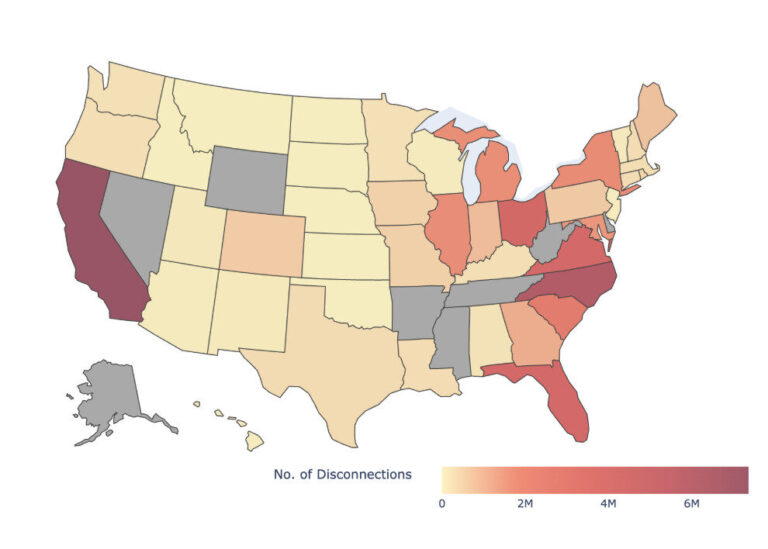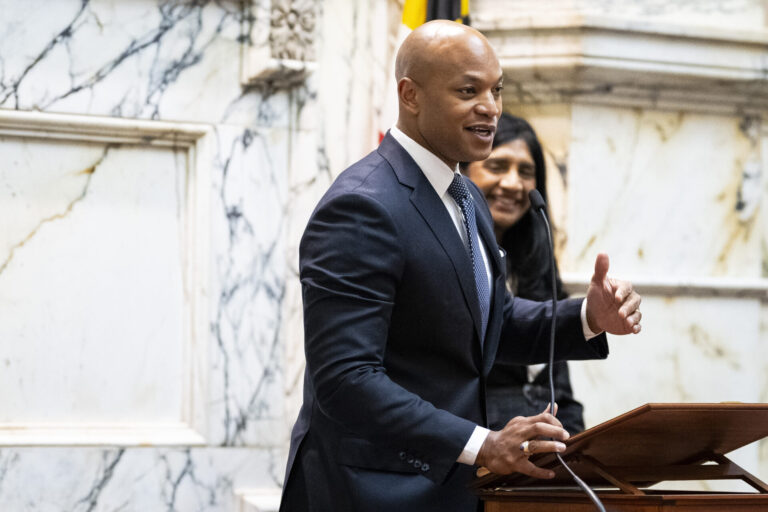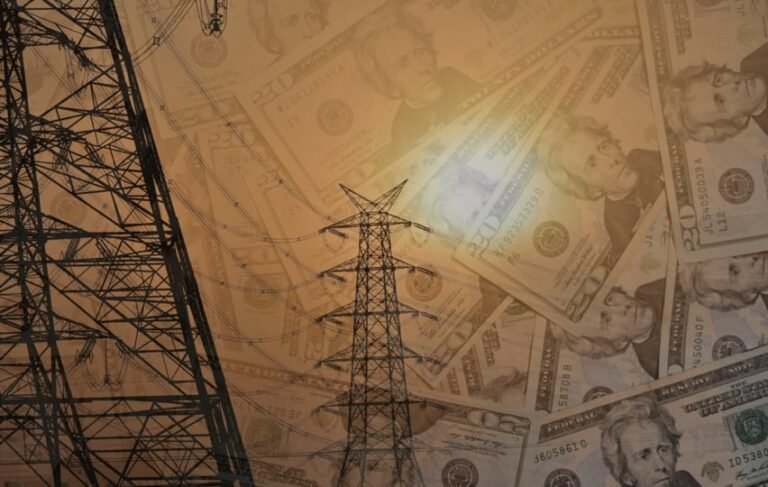Southern Company Pledges Net Zero Emissions by 2050 but Doubles Down on Fossil Fuels
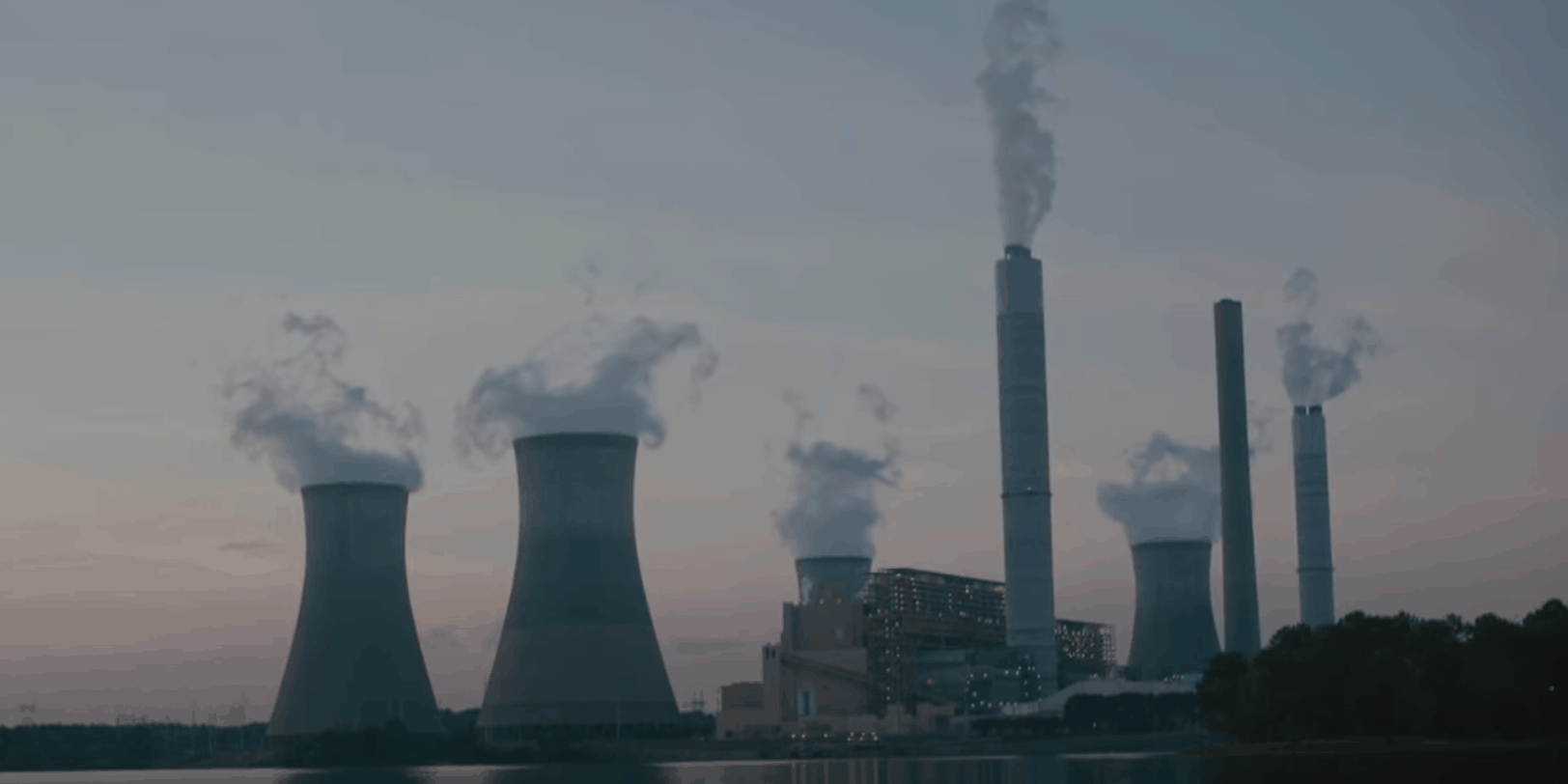
Southern Company unveiled an updated “net-zero” carbon goal yesterday at its Annual Meeting which relies heavily on negative emissions to enable continued investment in fossil fuels such as coal and gas. Southern’s goal stands in stark contrast to commitments from peer utilities such as Consumers Energy, NIPSCO, and PSEG, all of which have pledged to forego new gas plant development. Others, such as APS and Xcel, have committed to fully decarbonizing by 2050 without the use of offsets.
Southern has asked Alabama regulators to approve almost 2 gigawatts in new gas-burning power plants. The company also asked for and received approval from Mississippi and Georgia regulators to continue operating uneconomic coal plants.
“Net-Zero” Details Scant
Southern Company CEO Tom Fanning provided few details at the company’s Annual Meeting about how the utility would achieve net zero carbon emissions. Details were relegated to a few bullet points discussing expanded research and development on negative carbon technologies and other items such as planting trees and equipping biomass units with carbon capture and sequestration (CCS) technology.
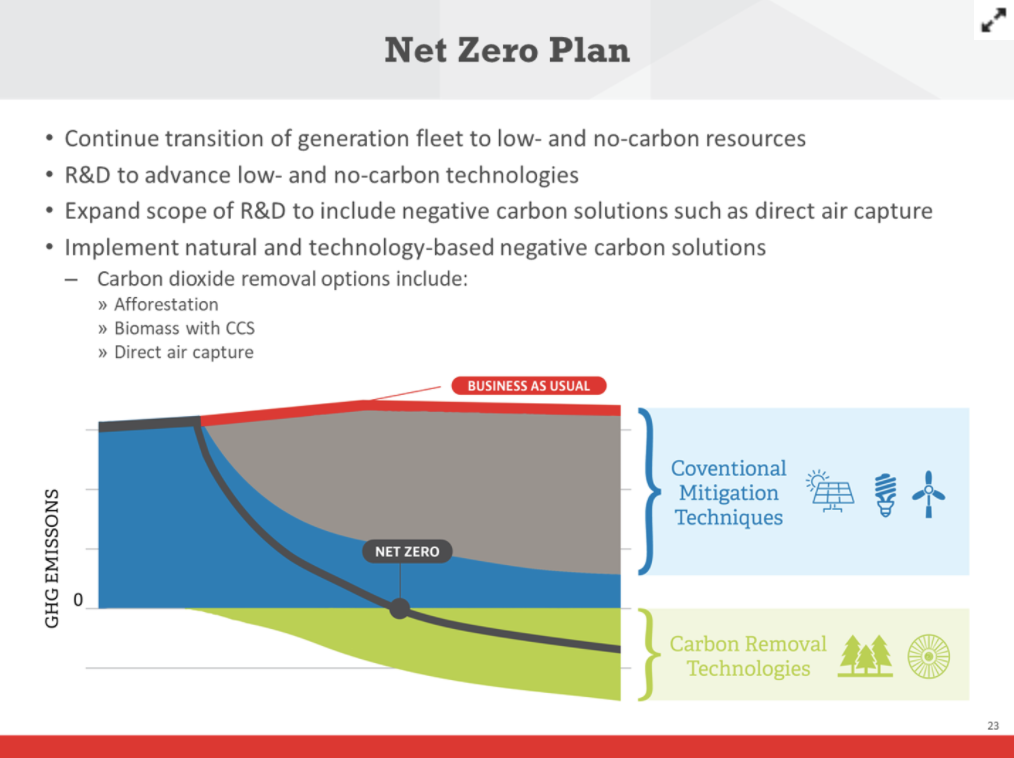
Southern’s previous attempts to build CCS in Kemper County, Mississippi were disastrous, both for the company and customers. Southern was forced to write off at least $6.4 billion in losses on Kemper after the price tag of the plant ballooned from $2.9 billion to $7.5 billion.
Fanning previously floated transportation electrification as an opportunity for Southern to “take credit for” decarbonization. Customers switching to electric transportation, however, does not obviate a utility’s need to fully decarbonize its electricity production in order to stave off the worst effects of climate change.
Gas and Coal Reign Supreme
Despite Southern’s net-zero emissions pledge, the company has moved aggressively to invest in new gas, and has worked to preserve coal in its generation mix even as most other utilities race to divest themselves of it. Clean energy advocates challenged the company to close uneconomic coal plants in Mississippi – Plant Daniel – and in Georgia – Plant Bowen. Southern fought the attempts to close both plants.
The Georgia Public Service Commission attempted to split the difference between Georgia Power and Sierra Club when it disallowed most new capital expenditures at Plant Bowen Units 1 and 2. However, Plant Bowen is still in service as part of Georgia Power’s generation fleet.
The Mississippi Public Service Commission allowed Mississippi Power to charge customers as much as $96.8 million to extend operations at the Plant Daniel, despite the fact that the utility could save customers hundreds of millions of dollars by shutting down the plant. Mississippi Power derives 93% of its electricity from gas, and just 1.5% from renewable energy.
Alabama Power filed with the Alabama Public Service Commission for approval to expand its generation capacity by almost 20%, mostly with 2 gigawatts of new gas despite the company’s data showing solar-plus-storage projects to be the most economically favorable for consumers. Alabama Power stated that one of the gas units, Plant Barry Unit 8, would have a 40-year useful life. The company added that it was “unlikely” that Plant Barry Unit 8 would become a stranded asset by 2060, ten years beyond Southern’s claimed net-zero emissions target of 2050.
A recent report from The Center for Environmental Public Policy at the University of California Berkeley and the nonprofit GridLab found that the U.S. can achieve reliable, 90% carbon-free electricity by 2035 using existing technologies, at no new cost to consumers, and without the need for any new gas plants.
CEO Tom Fanning’s greenhouse gas reduction bonus plan gives Fanning credit for the development of Southern’s liquified natural gas business. The transportation and combustion of natural gas emits greenhouse gases.
Southern’s Operating Companies Appear Unaccountable to Carbon Reduction Goals
Each of Southern Company’s regulated electric subsidiaries has dismissed the company’s carbon goals as immaterial to their planning processes. Southern Company previously claimed that integrated resource plans (IRPs) were a key tool to help the company plan to reach its greenhouse gas reduction goals.
But in a Mississippi Power’s IRP meeting, the utility admitted under questioning about its share of Southern’s carbon reduction goals that, “Right now, there is no particular cap on Mississippi Power emissions and no particular requirement that we do anything other than maintain cost effective, reliable generation.”
Sister companies Alabama Power and Georgia Power have echoed Mississippi Power’s position regarding Southern’s climate goals. Alabama Power said, “We don’t have a share of that, per se. That is a Southern company enterprise-wide goal.” When asked by the Georgia PSC staff how Southern Company’s goals affected Georgia Power’s IRP, the utility responded that the goals “did not influence the target amount of renewables proposed.”
Operating company CEOs Mark Crosswhite of Alabama Power, Paul Bowers of Georgia Power, and Anthony Wilson of Mississippi Power are not compensated for their performance toward Southern’s greenhouse gas reduction goals.
Blocking Renewable Energy and Energy Efficiency
Southern Company has actively blocked renewable energy progress and slow-walked energy efficiency across its service territory.
Georgia Power, as part of its 2019 IRP, was forced by Georgia regulators to include significantly more renewable energy and battery storage than it originally wanted. After asking to deploy just 1 gigawatt (GW) of solar, the Georgia Commission demanded 2.21 GW instead.
Georgia Power has resorted to bureaucratic red tape and contractual maneuverings in an apparent attempt to reduce customer uptake of renewable energy programs. The Georgia Solar Energy Industry Association criticized Georgia Power’s new distributed generation program guidelines as “a program that will most certainly fail”. The program, known as Customer Connected, proposed new fees on distributed generation, an almost 40% cut to participant compensation, and even the ability to prohibit any program participant from making public comments about the program.
Georgia Power’s anti-renewable energy tactics may cost the utility a large industrial customer, Nestlé Purina. Georgia Power filed a complaint in April 2019 with the Georgia Public Service Commission to block a competing utility, the Walton Electric Membership Cooperative, from providing Nestlé Purina with renewable electricity at a lower price than Georgia Power’s offering. The dispute stems in part from Georgia Power’s unwillingness or inability to provide reasonable renewable energy options to its large customers. Georgia Power lost its case before the Hearing Officer and has appealed the decision.
Alabama Power has consistently ranked at or near the bottom of utilities in energy efficiency, according to the American Council for an Energy Efficiency Economy (ACEEE). Alabama Power disputed ACEEE’s report but refused to respond to its data requests prior to publication. The Southern Alliance for Clean Energy’s (SACE) Energy Efficiency Scorecard similarly ranked Alabama Power as the worst utility in the Southeast for energy efficiency performance. Gulf Power, still owned by Southern Company at the time of SACE’s report, ranked next to last. Alabama Power has asked for approval of 200 megawatts of demand-side management program but has failed to disclose to the Alabama Public Service Commission what those programs might be.
Alabama Power also levies a $5 per kilowatt (kW) per month fee on grid-connected solar systems of 100 kW and smaller. After advocates filed a complaint alleging the fee was an unjust and discriminatory rate, Alabama Power doubled down and asked the Commission for approval to increase the fee to $5.42 per kW per month. Similar fees have been struck down by regulators or courts as discriminatory in Kansas, Michigan, and Wisconsin.
Southern’s Lobbying and Advocacy Misaligned with Decarbonization Goal
Southern Company’s limited lobbying disclosures have enabled lobbying activity that has been divergent with the decarbonization objectives that the company is espousing to investors and the public.
Since 2010, Southern has spent more than $135 million on lobbying at the federal level, the most of any utility in the country. Southern has actively lobbied or litigated against the Clean Power Plan, Mercury and Air Toxics Standards, Cross State Air Pollution Rule, Coal Combustion Residual rules, and the Paris Climate Accord, among others.
The company’s state-level disclosures offer almost no indications of whether the company’s state lobbying follows its federal pattern or is aligned with Southern’s corporate carbon reduction goals. The company does not publish or report total lobbying expenditures in Alabama or Georgia despite employing almost 50 lobbyists in the two states.
Header image source: YouTube

